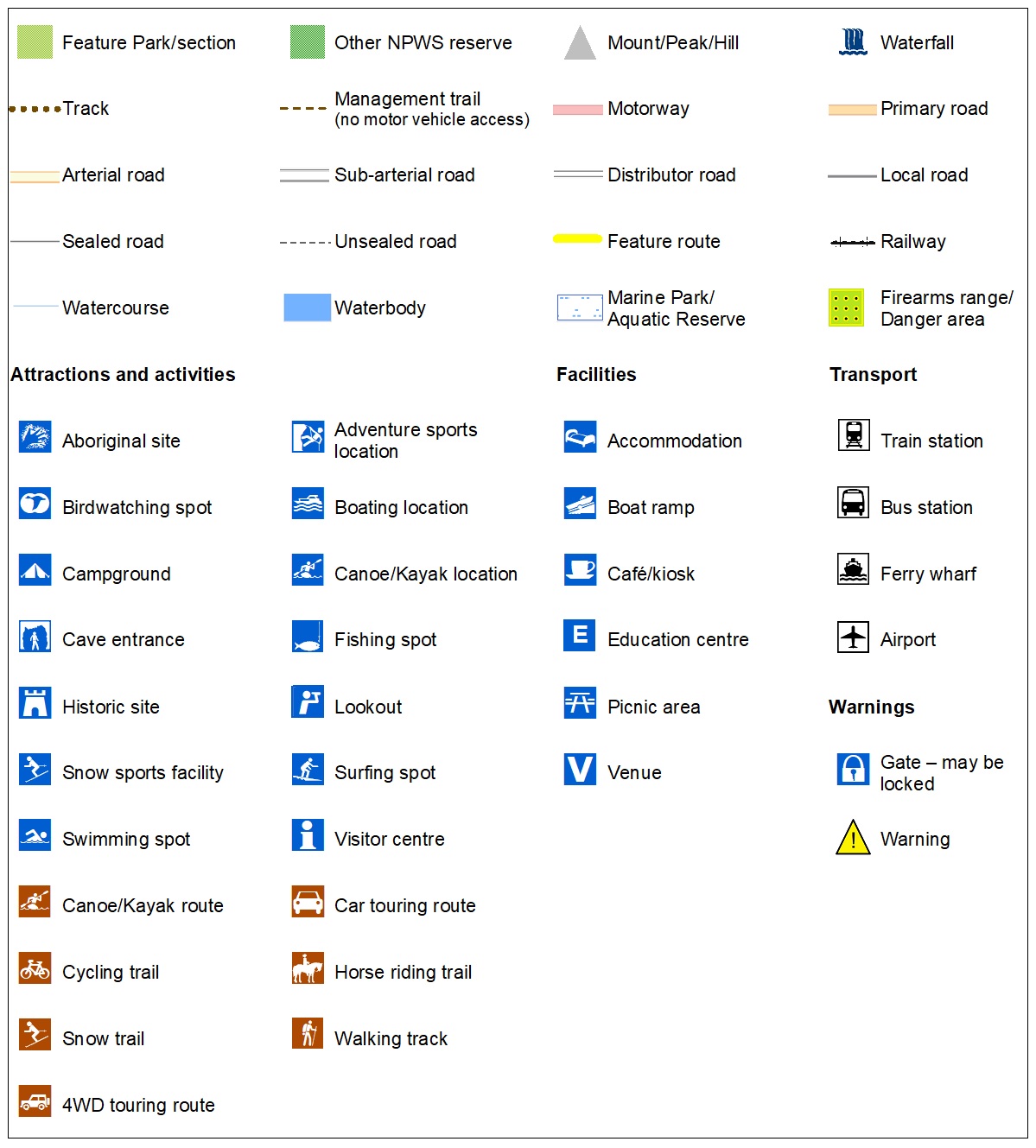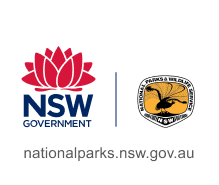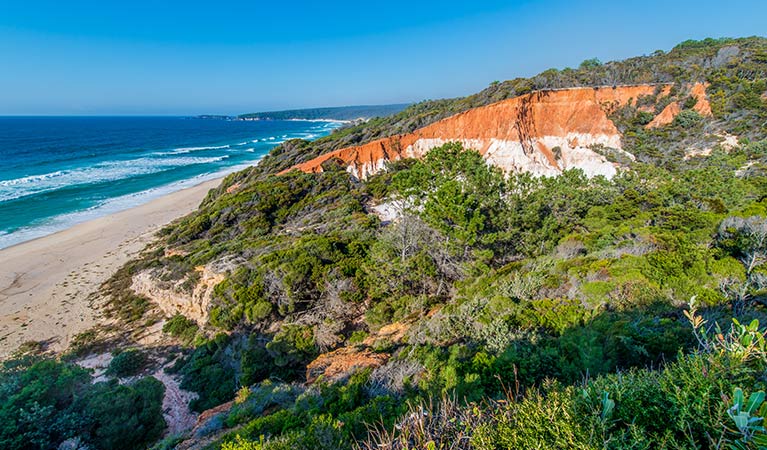Overview
Pinnacles loop walking track in Beowa National Park is an easy walk with two lookout points from which you can view the Pinnacles erosion feature.
- Where
- Pambula-Haycock area in Beowa National Park in South Coast
- Accessibility
- Hard
- Distance
- 1.1km loop
- Time suggested
- 20 - 40min
- Grade
- Grade 3
- Please note
- It’s a good idea to put sunscreen on before you set out and remember to take a hat and drinking water
- Remember to take your binoculars if you want to go birdwatching or whale watching
Pinnacles loop walking track is a pleasant, easy walk that meanders through the woodland and heath of the NSW Far South Coast region. With beautiful coastal views south to Lennards Island and north to Haycock Point, it’s an easy stroll for all the family in Beowa National Park, a short drive south of Pambula.
There are two lookouts along this gently undulating walking track that make ideal spots to view the fascinating Pinnacles formation – a spectacular erosion feature that consists of cliffs of soft white sands capped with a layer of red gravel clay. It was deposited during the Tertiary geological period – up to 65 million years ago.
Large areas of pine trees can also be seen between the eucalypts, and NPWS has been working to return the area back to its natural state.
Map

Map legend

Local alerts
For the latest updates on fires, closures and other alerts in this area, see https://www.nationalparks.nsw.gov.au/things-to-do/walking-tracks/pinnacles-loop-walking-track/local-alerts
General enquiries
- National Parks Contact Centre
- 7am to 7pm daily
- 1300 072 757 (13000 PARKS) for the cost of a local call within Australia excluding mobiles
- parks.info@environment.nsw.gov.au
Park info
- in the Pambula-Haycock area of Beowa National Park in the South Coast region
The Pambula-Haycock area of Beowa National Park is always open but may have to close at times due to poor weather or fire danger.
Visitor info
All the practical information you need to know about Pinnacles loop walking track.
Track grading
Features of this track
Distance
1.1km loop
Time
20 - 40min
Quality of markings
Clearly sign posted
Experience required
No experience required
Gradient
Gentle hills
Quality of path
Formed track, some obstacles: The walk is 1.2m-wide and a mixture of hard-packed ground and gravel.
Steps
Occasional steps:
- On the eastern side of the walk, there are 2 large staircases with 60 and 30 steps each.
- In the southern part of the walk, there are smaller sets of steps ranging from 2 to 6 steps each.
Accessible options
From where the walk starts, there's 370m on the western side of the loop and 220m in the northern part of the loop that's step-free and mostly flat with gentle hills.
Getting there and parking
Get driving directions
- Travel 10km south along Princes Highway from Pambula
- Turn left onto Haycock Road and travel 1km
- Turn right at Pinnacles Road
Parking
Parking is available in a roadbase carpark at the start of Pinnacles loop walking track.
Best times to visit
There are lots of great things waiting for you in Beowa National Park. Here are some of the highlights.
Autumn
Camp at Bittangabee Beach campground and see lyrebirds performing their characteristic dance and tail display.
Spring
Visit Green Cape Lighthouse or Boyds Tower to spot whales migrating south to their Antarctic feeding grounds - you might even see females with young calves.
Summer
Plan a camping trip to Saltwater Creek - to enjoy the lagoons and beautiful surf beach.
Winter
Take the Light to Light walk when it's nice and cool and the banksias are in bloom.
Facilities
Toilets
There are non-flush toilets at the carpark where this walk begins.
- Non-flush toilets
Maps and downloads
Accessibility
Disability access level - hard
Assistance may be required on Pinnacles loop walking track:
- From where the walk starts, there's 370m on the western side of the loop and 220m in the northern part of the loop that's step-free and mostly flat with gentle hills.
- After these points, the walk has many steps including 2 large staircases on the eastern side of the walk and smaller sets of steps in the southern part of the loop.
- There are toilets at the carpark where this walk begins, but they're not accessible or ambulant.
Prohibited
Pets
Pets and domestic animals (other than certified assistance animals) are not permitted. Find out which regional parks allow dog walking and see the pets in parks policy for more information.
Smoking
NSW national parks are no smoking areas.
Learn more
Pinnacles loop walking track is in Pambula-Haycock area. Here are just some of the reasons why this park is special:
Aboriginal culture

The Yuin People are the Traditional Owners and Custodians of Beowa National Park and they have a long and complex relationship with the coastal environment. Some of the best preserved mounded middens on the east coast of Australia are found in the park along the Pambula River. These middens contain the shells of oysters, mussels and sometimes the bones of sea and land mammals—collected by Aboriginal people from the rock platforms, reefs and estuaries along the park’s coastline.
- Guided Aboriginal cultural tour in Eden Discover the rich culture of the Thaua People on an immersive cultural tour with Eden Local Aboriginal Land Council. You’ll see stunning coastal landscapes in and around Beowa National Park.
- Severs Beach Severs Beach, in Beowa National Park in the whale watching town of Eden on NSW’s Sapphire Coast, offers Aboriginal heritage, fishing, beach walks and more.
Rocks tell a story

The park’s stunning rock formations, inlets and headlands are the result of extensive geological folding. Most of Beowa National Park lies on red, brown and green shales, sandstones, siltstones and quartzites. These were formed in the Devonian period around 360 million years ago, before dinosaurs roamed the earth. You can see these rock types exposed along the cliffs and headlands. The Devonian period is known as The Age of Fishes and internationally-significant fish fossils have been found in several places along the park’s coastline.
- Haycock Point to Barmouth Beach walking track The walk from Haycock Point to Barmouth Beach in Beowa National Park takes in whale watching, scenic coastal views, wildlife and birdwatching opportunities.
- Pambula River kayaking tour Experience Beowa National Park from the crystal-clear waters of the Pambula River on this exciting guided kayaking tour with Navigate Expeditions.
Refuge for threatened species

Several threatened species take refuge in the Pambula-Haycock area. North of Pambula River there's an important population of yellow-bellied gliders—listen carefully for their trademark crackles and shrieks. Around 50 native mammals and nearly 150 species of birds have been recorded in Beowa National Park. This includes 1 critically endangered bird, 4 endangered animal species and 25 vulnerable species.
- Haycock Point to Barmouth Beach walking track The walk from Haycock Point to Barmouth Beach in Beowa National Park takes in whale watching, scenic coastal views, wildlife and birdwatching opportunities.
- Pambula River kayaking tour Experience Beowa National Park from the crystal-clear waters of the Pambula River on this exciting guided kayaking tour with Navigate Expeditions.
Plants and animals protected in this park
Animals
-

Australian pelican (Pelecanus conspicillatus)
The curious pelican is Australia’s largest flying bird and has the longest bill of any bird in the world. These Australian birds are found throughout Australian waterways and the pelican uses its throat pouch to trawl for fish. Pelicans breed all year round, congregating in large colonies on secluded beaches and islands.
-

Australian fur seal (Arctocephalus pusillus doriferus)
The largest fur seal, Australian fur seals are found in isolated rocky outcrops and islands along the NSW coast. They come ashore to form breeding colonies and can often be seen at Barunguba Montague Island Nature Reserve.

